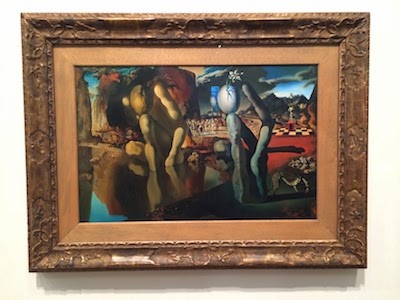 |
| Metamorphosis of Narcissus, by Salvador Dali |
We’re not always big fans of modern art. We just don’t “get” random objects strewn across the floor of a museum, or piles of what look like dog poop next to a couple of pieces of wood, that are labeled as “art”. Maybe the artist sees something there or has in his mind a point he wants to get across, but that doesn’t mean I want to look at it or that I want to understand his point. But we really like the modern art that is interesting, that is challenging, not only to our senses but in the sense that it was obviously technically difficult for the artist to have created it in the first place. For these reasons, we love the works of Salvador Dali and Pablo Picasso, both of whom are represented pretty well at the Tate Modern museum in London, as we discovered this week.
The Tate Modern is a unique museum in a couple of regards. First, it is in an old power facility, and it’s about as industrial as you can imagine, with huge expanses of open, concrete floored space where power turbines once did their magic, expanses and heights of dark brown brick that have been interestingly mixed with glass and steel. Architecturally, it seems very much intended to house a modern art collection, but of course we know it wasn’t originally.
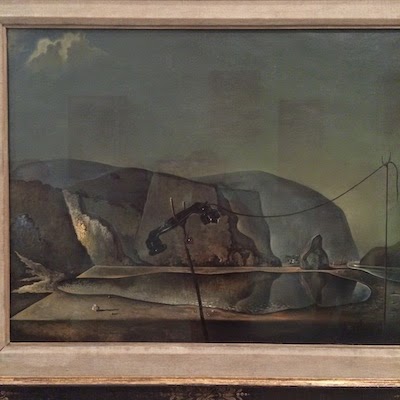 |
| Mountain Lake, by Salvador Dali |
Second, the Tate Modern is not organized like any other museum. Most art museums are organized by movement and chronology or by artist or schools of artists. The Tate Modern is organized by themes, allowing the visitor to compare works across movement and geography that have common thematic elements, and in the dreams theme we naturally found Dali’s surrealism and Picasso’s cubism.
You don’t necessarily have to understand whatever it is that Dali or Picasso intended to depict with their work to appreciate it. Their works are simply interesting, inviting you to stop and stare at them for a while, trying to discover that the lake is not just a blob but a mirror of the mountains, that the phone wire has been severed and goes nowhere, or that the vaguely steampunk-ish blob of a woman is still–somehow–erotic.
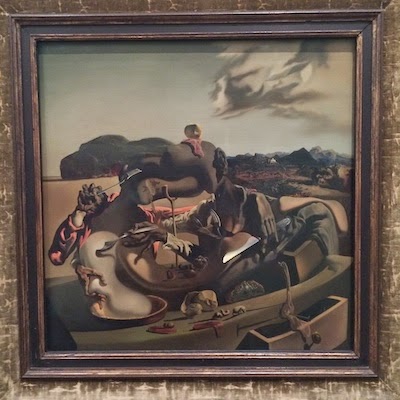 |
| Autumnal Cannibalism, by Salvador Dali |
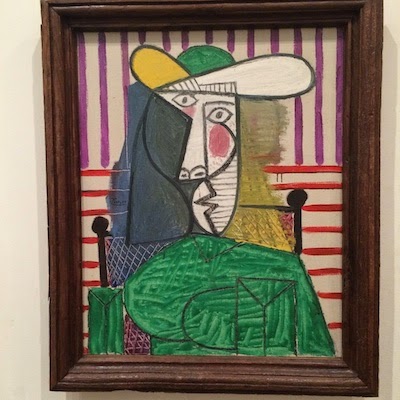 |
| Bust of a Woman, by Pablo Picasso |
Even Dali and Picasso are still a stretch for many people, we know. We’ve overheard both described as “weird” and full of indecipherable symbolism. Those are probably fair assessments, as Dali’s famous melting clocks and Picasso’s iconic out-of-whack faces can easily be considered weird. But aren’t most of the dreams we have also “weird”? Aren’t we often trying to figure out the symbolic meanings of our dreams? Hence the wisdom of the Tate Modern in their thematic layout.
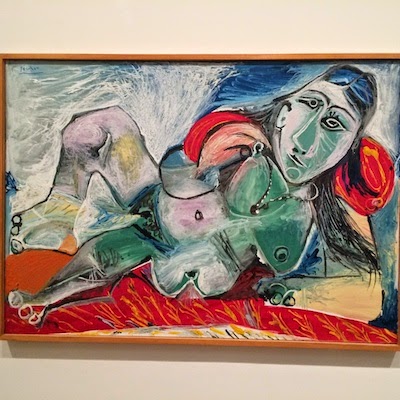 |
| Nude Woman with Necklace, by Pablo Picasso |
Weird or not, we don’t think anyone can deny that the works of Dali and Picasso are interesting and obviously challenging to have created. That makes them art worth seeing in our book.
 |
| The Three Dancers, by Pablo Picasso |






